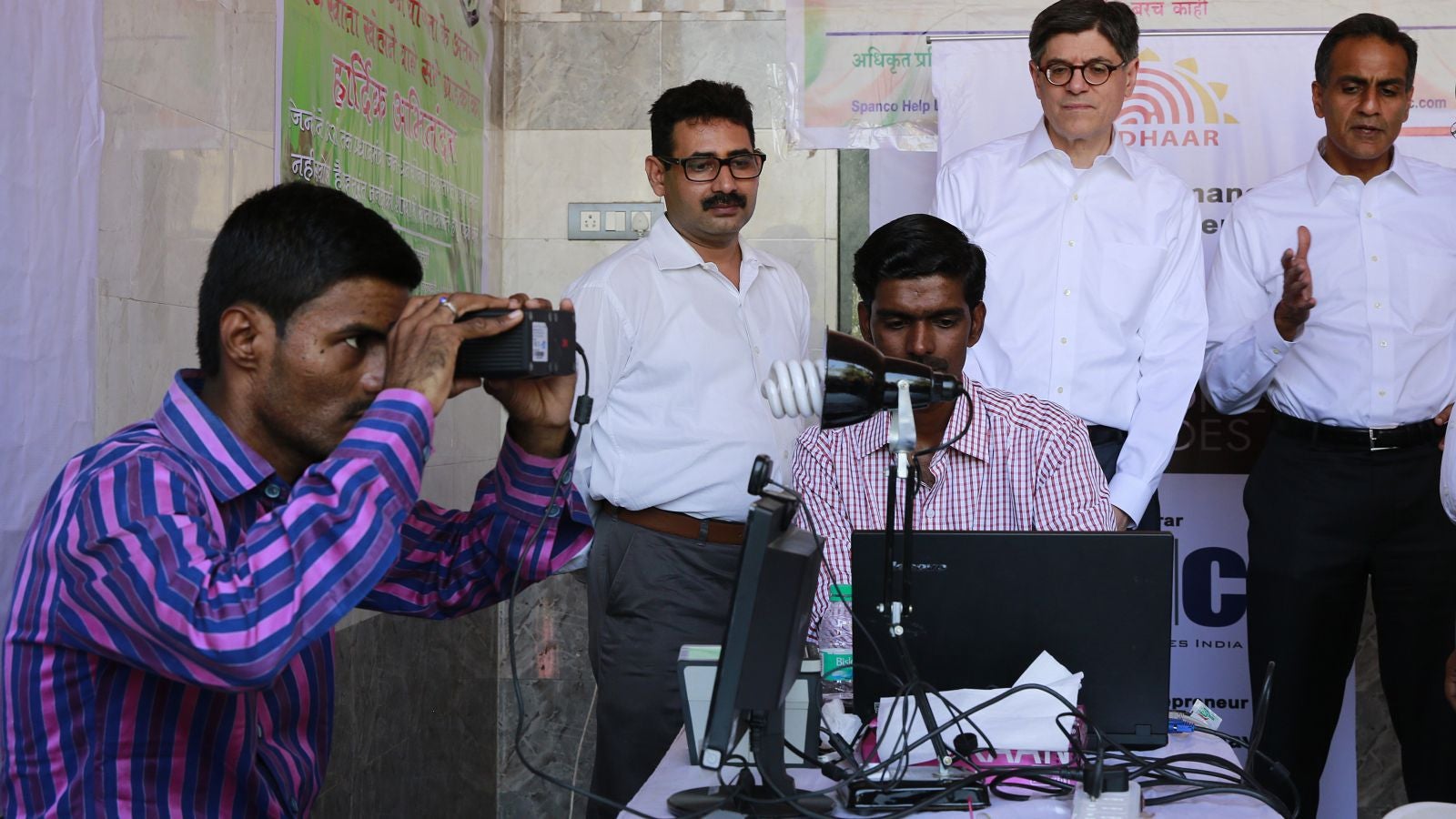Aadhaar verdict brings India’s banks back to square one
A long-running nightmare of India’s banking customers has finally ended—but for banks, it has just begun.


A long-running nightmare of India’s banking customers has finally ended—but for banks, it has just begun.
Till recently, Indians were being regularly harassed with coercive text messages, emails, and calls to link their bank accounts with Aadhaar, the government’s massive biometrics-based ID platform for citizens. Often, they were threatened with dire consequences in case of failure, even brazenly being denied services in certain cases.
Then, on Sept. 26, a five-judge bench struck down section 57 of the Aadhaar Act, which allowed corporate entities or even individuals to demand the unique Aadhaar number in exchange for goods or services.
While customers are rejoicing, banks are reeling under the blow, having already spent a fortune and considerable time and effort in collecting customers’ data. Now they have to revert to the pre-Aadhaar system.
What does it mean for banks and customers?
The Reserve Bank of India (RBI) had made it mandatory for lenders to link bank accounts with the 12-digit ID by March 31. However, a few weeks before that cut-off date, the order was struck down by the country’s apex court. But overzealous banks’ self-imposed deadlines were further advanced, spelling trouble for customers.
In the meantime, the situation was aggravated by the Unique Identification Authority of India (UIDAI), which manages Aadhaar. It had aggressively pushed banks forward in this enrollment drive. In fact, earlier this month, over 20 banks were staring at penalties for failure to make eight Aadhaar enrolments or updates per branch per day.
Nevertheless, life was easier for the lenders on the customer front.
“With UID, the system was very standardised, they just had to submit one document and account could be opened,” explained R Baskar Babu, managing director and CEO of Suryoday Small Finance Bank.
The advantage was that once this single document was submitted for the know-your-customer verification process there was no need to do a physical verification.
But with the new regime, customer-addition may slow down and the processes will get longer.
“Now that a physical verification will be required, it will increase time and cost and the millions of customers that were easy to acquire will slow down,” Rishi Gupta, CEO of FINO Payments Bank, told Quartz.
Lenders will need to look for alternatives in both the online and offline spaces, Babu of Suryoday Small Finance Bank said. “We also need to spend time and effort on educating the bank staff on how to deal with the new rule to ensure there is no customer service delinquency,” he added.
For instance, earlier, in a day if you could verify 20 bank accounts and make them operational immediately; now you may be able to do only two because an extra leg of work will get added, explained Gupta.
Costs are also likely to go up on average by 10%, and more for banks that were relying till now only on the digital model for customer acquisition, believe bankers.
For customers, delays will be the primary result of the supreme court’s order.
“Today, on our digital platform, if a customer wants to open a bank account with an Aadhaar card, it can be opened within five minutes and the account can also become operational immediately,” said Rajnish Kumar, chairman, State Bank of India.
However, if customers want to hold back their 12-digit UID, then they must wait longer.